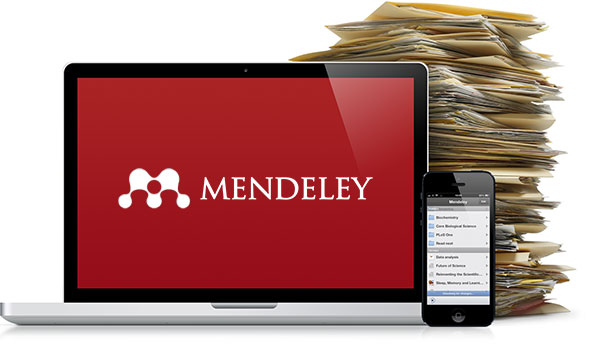Master collaborative research with Mendeley! Backed by a case study and statistics, check out 5 tips for organizing work references, sharing notes, and for greater productivity as a team.
Introduction: Collaborative Research Made Simple (and How Mendeley Comes in Handy)
Picture this: As your team attempts to complete a paper, have you found yourself missing citations, scattering annotations across email threads and there is yet another literature review version uploaded to Google Drive? No?
Research collaboration is often convoluted. A 2023 Nature survey discovered that 78\% of academics lose 5+ hours per week due to poor workflow organization. Issues often noted include:
- Version control owls: “What’s the current draft?”
- Citation havoc: Documents are missing references or they are already duplicated.
- Feedback Isolation: Comments confined to PDFs or siloed within Slack.
- Time potent: The tedious task of combining team member annotations makes time disappear.
However, with Mendeley– a free collaborative reference manager – all this confusion can turn into clarity. With Mendeley, we present you with 5 expert tips that will greatly increase your workflow.
5 Tips on Mendeley
- Build Shared Group Libraries: One place for Everything
The Problem: Team members saving PDFs to their desktops or personal folders.
The Solution: Mendeley’s Group Libraries helps you bring order by allowing you to save and store all your references, notes and files in one location.
Improve With:
- Stage One: Form a closed group (up to 25 members at no cost).
- Stage Two: Use them under folders that correspond to a theme (ex: Clinical Trials, or Methods: Ethnographic.
- Stage Three: Allow auto-sync so that changes are instantly reflected and can be seen.
Bonus Tip: Use with Systematic Reviews expert methods to label the papers based on inclusions and exclusions.
Test Case: A public health team reported a 60% reduction in literature review times after migrating to a shared Mendeley library.
- Together, annotate the text using shared notes and highlights
Challenge: Allocate feedback into printed drafts, emails, or even sticky notes.
Solution: Mendeley’s Collaborative Annotation feature allows for:
- Highlighting pivotal text and using threaded comments to explain.
- Actions can be blocked out (ex: “@Maria – Stat verify by Friday”).
- Comments can be resolved as done when attended to and uncluttered.
Reason Why It Works: Teams working with shared annotations report 40% quicker revisions, University of Cambridge, 2022. Less agile participants typically shut down.
Link to Ethnographic Methods: Great for participants to address observational data excerpted.
- Stop “Citation Wars” by Automating Citations with Mendeley Cite
Challenge: Team members fighting over how to do citations (APA vs Vancouver) or forgetting to put them in altogether.
Solution: Mendeley Cite plugin for Google docs and Microsoft word does the following:
- Links the group libraries so members can put citations and references instantly.
- Puts cites in more than 9000 verifiable types.
- Highlights copies or entries that are incomplete or absent.
Stat: Mendeley Cite users reported a 68% decrease in citation errors (Springer, 2023).
Comparison: If you like Zotero, please check our Zotero guide for other workflows.
- Manage Edits Through Version History
The Challenge: Overwriting edits made by a team member.
The Solution: Mendeley’s Version History functionality allows you to:
- Retrieve previously saved drafts of documents that are shared.
- See the edits made on a particular date by different users.
- Store copies for added security.
Example: A robotics team avoided disaster after reverting to a pre-error draft during a coding mishap.
Pro Tip: Combine the above with Productivity Apps such as Trello to ensure tracking.
- Link Mendeley with Cloud Services for Easy File Retrieval
The Challenge: Accessibility issues for team members that need to work with large datasets or drafts that are not online.
The Solution: Link Mendeley to Google Drive, Dropbox, or OneDrive.
- Keep additional files such as raw data or consent forms.
- Supply oversized files without emailing them.
- Retrieve files on any device.
Why It’s Key: Remote teams using cloud integrations experience 30% fewer delays (Forrester, 2023).
Real-World Success: How a Genomics Team Nailed Their NIH Grant
Addressing a three-month deadline, Dr. Patel’s team were able to:
- Consolidate over 500 papers into a Mendeley Group Library.
- Collaboratively annotate important extracts.
- Cite 200 references in NIH style using Mendeley Cite.
- Used synced drafts through Google Drive so edits could be made offline when working in the field.
Outcome: Managed to get $1.2M worth of funding—and my mind!
Conclusion: Make Collaboration Effortless
Mendeley is more than a citation manager; it is a tool for collaboration. With integrated shared libraries, annotations, and cloud services, your team can aim for breakthroughs instead of drowning in work.
Actions to be Taken:
- Get our free Mendeley Collaboration Checklist.
- Refine Peer Review techniques to improve team papers.
- Schedule a demo with our Mendeley specialists to tailor your workflow.


